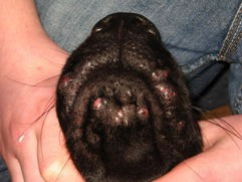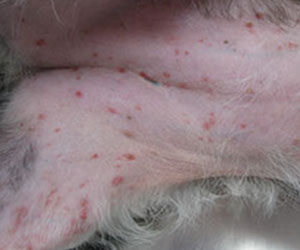
What Does A Bacterial Skin Infection Look Like On Dogs. The most common isolated bacterium from dogs is Staphylococcus pseudintermedius. Signs of Bacterial Infections in Dogs The signs of bacterial infections typically depend on the location of the infection. Yeast normally live on the skin of dogs but when there is a change in the health of the skin or the immune system of the dog yeast are more likely to multiply and a yeast infection results. Infected dogs can have areas of redness rash-like pustules and hair loss.

Superficial signs appear as scaling of the skin topical alopecia hair loss inflammation redness papular eruptions small solid eruption of the skin that does not contain puss crusts and severe pyoderma puss. Infected dogs can have areas of redness rash-like pustules and hair loss. Excessive itching can be quite worrisome especially if your dog develops bald spots or damages his own skin as. Redness of the ear flap known as the pinna Discharge that can range from dry to moist and vary in color from black to yellow or white. Can dogs get STDS. But when the skin is irritated or damaged such as in the case of a parasite bite dryness food allergies or injury the bacteria seize their opportunity to multiply.
Dog skin is unique as it lacks a fatty plug that is present in other animals including humans.
Bacterial skin infections often occur in dogs secondarily to underlying skin allergies hormonal endocrine disorders or other internal disease. Infected dogs can have areas of redness rash-like pustules and hair loss. In dogs with short hairs the hair will look hard and the hair follicles will appear to be ruptured. There are several stages to skin infection The infection often begins on the superficial layers of the dogs skin with minor skin irritation and. Bacterial skin infections often occur in dogs secondarily to underlying skin allergies hormonal endocrine disorders or other internal disease. Dog skin is unique as it lacks a fatty plug that is present in other animals including humans.